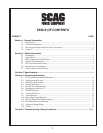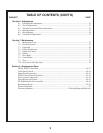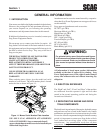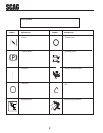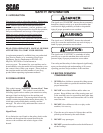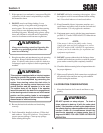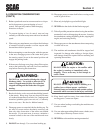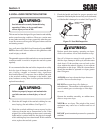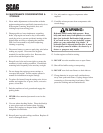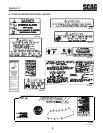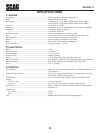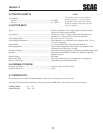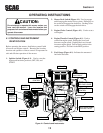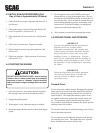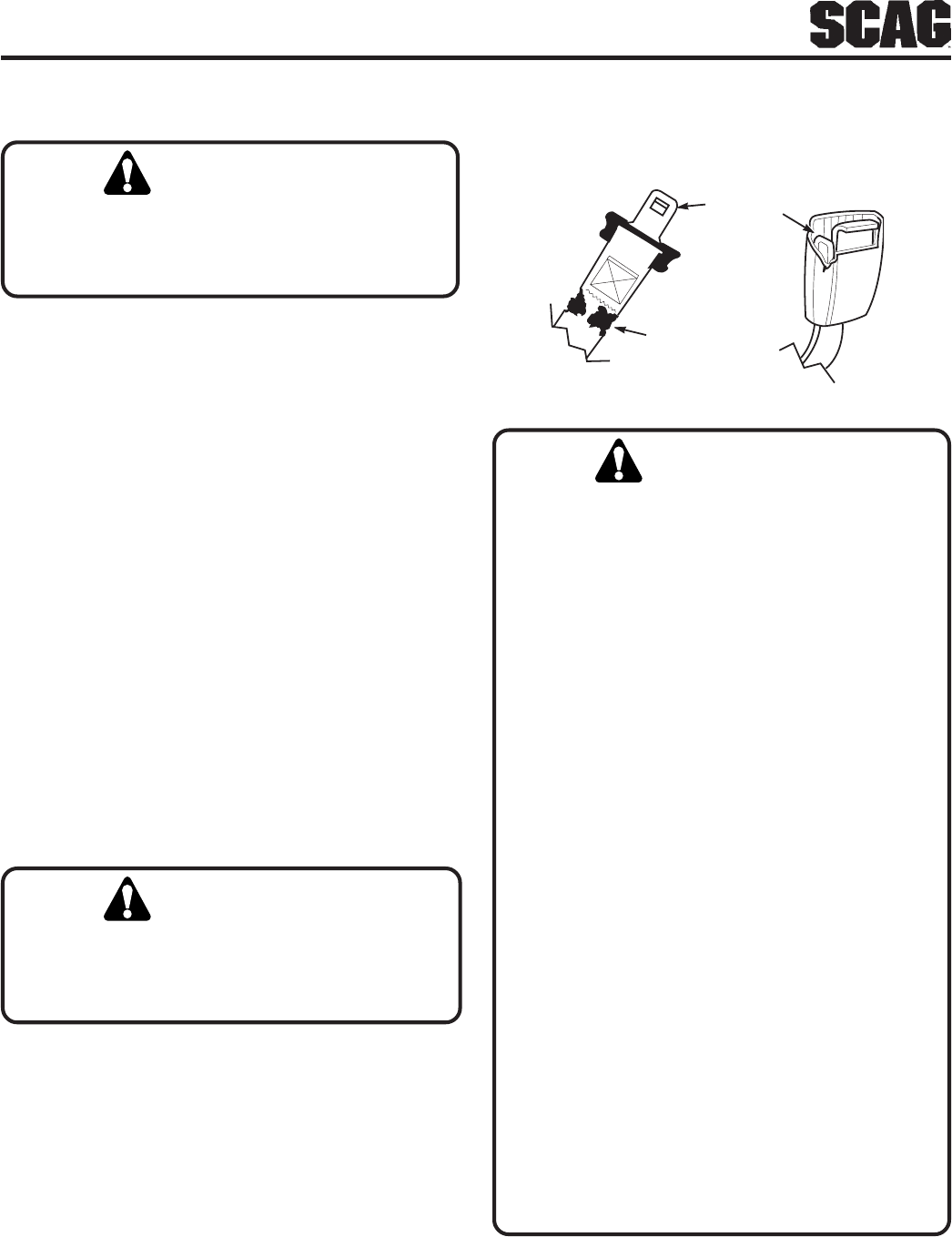
7
2.5 ROLL-OVER PROTECTION SYSTEM
Section 2
This mower has been designed for good traction and stability
under normal mowing conditions. However, caution must
be used when traveling on slopes, especially when the grass
is wet. Do not mow on wet grass. Wet grass reduces traction
and steering control.
Any or all parts of the Roll-Over Protection System MUST
NOT be removed. Failure to adhere to this guideline could
result in injury or death.
The potential exposure of this seat belt to severe enviromental
conditions make it crucial to inspect the seat belt system
regularly.
It is recommended that the seat belt be inspected on a daily
basis for signs of damage. Any seat belt system that shows
cuts, fraying, extreme or unusual wear, significant
discoloration due to UV exposure, dirt or stiffness, abrasion
to the seat belt webbing, or damage to the buckle, latch
plate, hardware or any other obvious problem should be
replaced immediately.
1. Check the full length of the seat belt webbing for cuts,
wear, fraying, dirt and stiffness. See Figure 2-1.
2. Check the seat belt webbing in areas exposed to ultra
violet rays from the sun or extreme dust or dirt. If the
original color of the webbing in these areas is extremely
faded and/or is packed with dirt, the physical strength
of this webbing may have deteriorated. If this condition
exists, replace the seat belt system.
WARNING:
Failure to properly inspect and maintain the
seat belt can cause serious injury or loss of
life.
WARNING:
Seat belt must be securely fastened during
operation. Failure to do so could cause
serious injury or loss of life.
3. Check the buckle and latch for proper operation and
determine if the latch plate is exessively worn, deformed,
or if the buckle is damaged or cracked. See Figure 2-1.
Figure 2-1 Seat Belt Inspection
INSPECT WEBBING
INSPECT BUCKLE
& LATCH
WARNING:
Reduce speed when turning, operating on slopes,
slick or wet surfaces. Allow extra distance to stop.
Stay off of slopes too steep for safe operation. To
check a slope, attempt to back up it (with the cutter
deck down). If the machine can not back up the
slope without the wheels slipping, do not operate
the machine on this slope. Under no circumstances
should the machine be operated on slopes greater
than 15 degrees.
ALWAYS travel up or down the slope whenever
possible. Never across the slope.
DO NOT mow near drop-offs, ditches or
embankments. The machine could suddenly roll
over if a wheel goes over the edge or if the edge
caves in.
Operate the machine smoothly, no sudden turns,
starts or stops on a slope.
NEVER tow on slopes. The weight of the towed
equipment may cause loss of traction and loss of
control.
DO NOT permit untrained personnel to operate the
machine.



